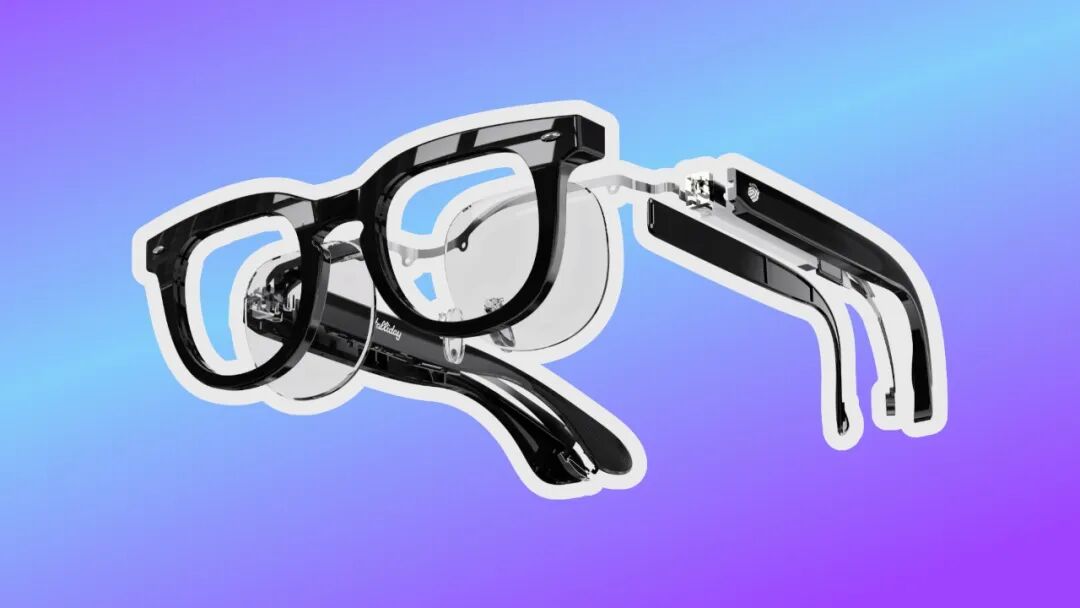The AI Glasses with the Highest Financing Amount in History: Spotlighted by Top Overseas Tech Media—What Makes These Glasses Stand Out?
![]() 09/24 2025
09/24 2025
![]() 568
568
Have you ever envisioned a future where, as you confidently engage in conversation with foreign clients, real-time translation subtitles seamlessly appear before your eyes? Or, as you deliver a speech to an audience of hundreds at a conference, key talking points discreetly display on your lenses? Or, as you stroll down the street and receive a sudden message from your boss, you can effortlessly flick your finger to 'read and dismiss' it?
In 2025, a pair of AI smart glasses named Halliday is turning these visions into reality.
These glasses don't flaunt flashy mixed-reality features or cumbersome helmets; instead, they excel at one thing: becoming your 'invisible AI assistant.'
As industry giants like Meta and Apple enter the fray, attempting to define smart glasses with feature-packed offerings, this dark horse that emerged midstream has captured the hearts of global tech enthusiasts with its incredibly lightweight and private design.
Who exactly is Halliday? Where does it originate from? And how does it dare to challenge the tech titans?
Layout: Yanzi
The Birth of a Dark Horse: Unveiling Halliday's Origins
In the tech landscape dominated by giants, the emergence of a dark horse often begins with an unexpected narrative.
The biggest surprise in the AI hardware arena in 2025—the Halliday smart glasses—epitomize this phenomenon.
Its founding team didn't hail from Silicon Valley tech behemoths but originated from Moody, a renowned Asian colored contact lens brand. This crossover from 'beauty' to 'intelligence' is rooted in a core philosophy: the best technology should seamlessly integrate into life, like air and contact lenses, without being intrusive. The founders firmly believe that technology should be an elegant aid, not a burdensome addition.
This philosophy quickly sparked enthusiasm among global tech enthusiasts. In early 2025, Halliday made its debut on Kickstarter, the world's largest crowdfunding platform, and its performance was nothing short of extraordinary.
Within just 72 hours of the project's launch, it successfully raised over $1.37 million, eventually surpassing $2.5 million, making it the AI/AR glasses project with the highest financing amount in Kickstarter history.
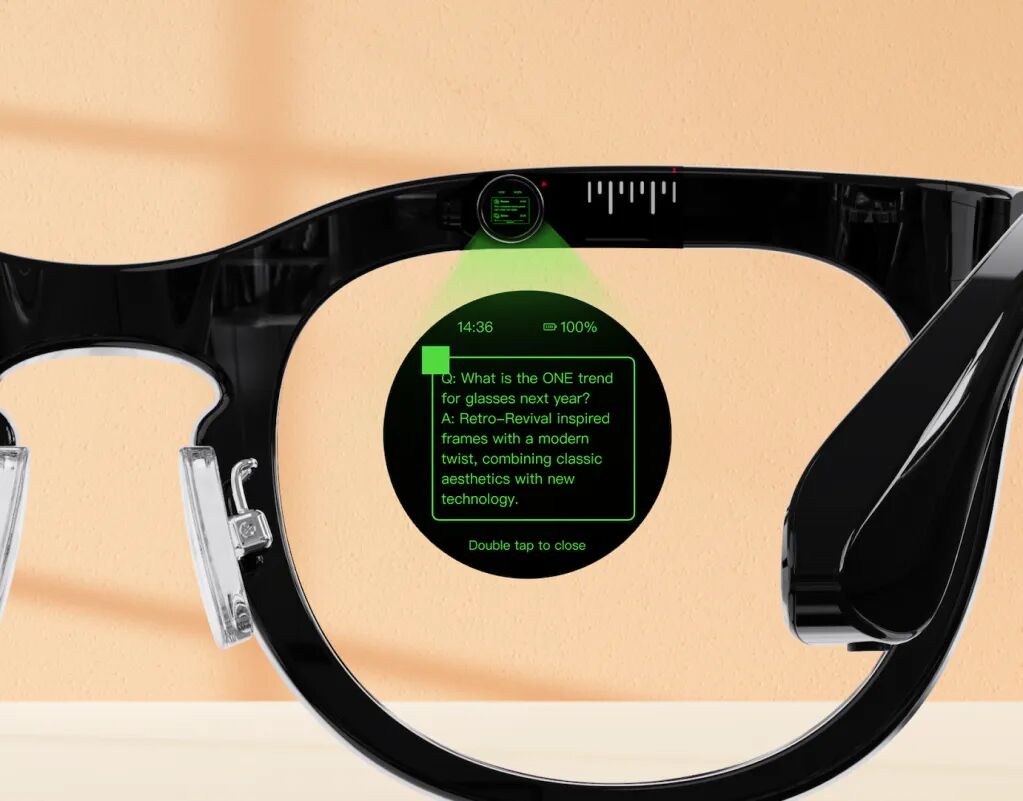
This staggering figure not only represents substantial startup capital but also serves as a vote of confidence from global early adopters, underscoring the market's urgent desire for 'lightweight and private' AI glasses.
Subsequently, at CES 2025 (International Consumer Electronics Show) held in Las Vegas, Halliday completed its transformation from an online sensation to an offline focal point.
Upon its debut at the show, it garnered countless glances and was featured by top tech media outlets such as The Verge and Wired, being hailed as the 'most intriguing new direction in the smart glasses field.'
A cutting-edge colored contact lens brand has emerged as the dark horse in AI glasses.

Core Advantages: What Sets Halliday Apart?
Halliday's ability to stand out among smart glasses doesn't rely on feature overload but on three core advantages that precisely address user pain points, achieving the ultimate in 'elegance' and 'practicality.'
Firstly, its most revolutionary design—an 'invisible screen.'
Unlike traditional solutions that project images onto the lenses, Halliday's proprietary 'DigiWindow' technology integrates a miniature optical module inside the frame. This means only the wearer can see navigation, prompts, or translation subtitles by glancing upward, while to others, it appears as just an ordinary pair of glasses. This technology completely resolves the long-standing 'social awkwardness' issue of smart glasses, granting users absolute information privacy and making intelligent assistance graceful and dignified.

Secondly, its 'wear-and-forget' extreme lightness.
The Halliday frame weighs only 35 grams, not only lighter than most ordinary black-framed glasses on the market but also less than half the weight of Meta Ray-Ban Display (89 grams). Such a lightweight design eliminates the 'burden of wearing' commonly associated with electronic devices. It's no longer a gadget you need to 'make up your mind' to wear outside but a daily item you can wear all day like ordinary prescription glasses. This 'seamless integration' experience is a crucial step towards the true popularization of AI glasses.
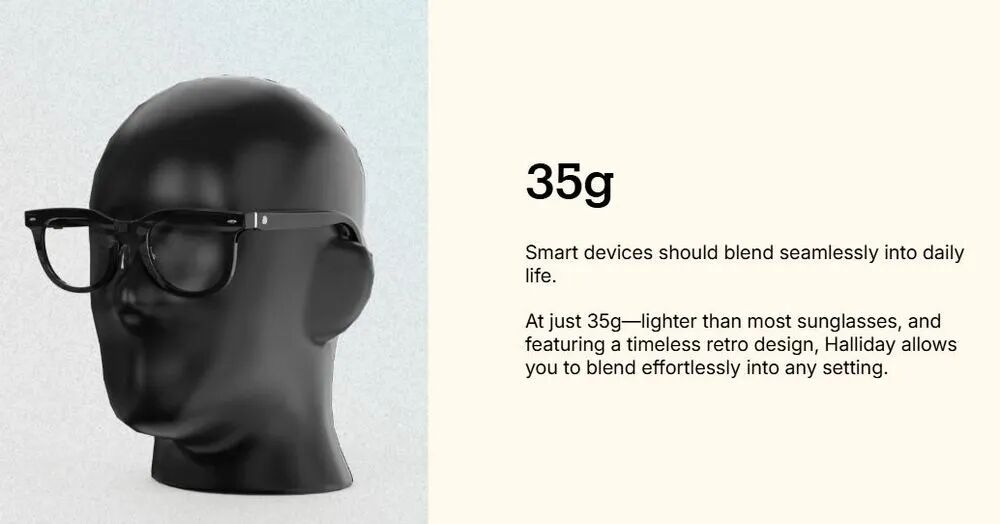
Finally, its 'silent commands'—the ingenious interaction of the smart ring.
In quiet conference rooms where silence is paramount or noisy subways where voice recognition is impossible, pulling out your phone or speaking aloud seems inappropriate. Halliday addresses this with a smart ring that allows users to answer calls, switch pages, adjust volume, and more with slight finger slides on the ring's surface. This interaction method is not only rapid but also extremely discreet, enabling you to silently control the digital world with a flick of your hand.
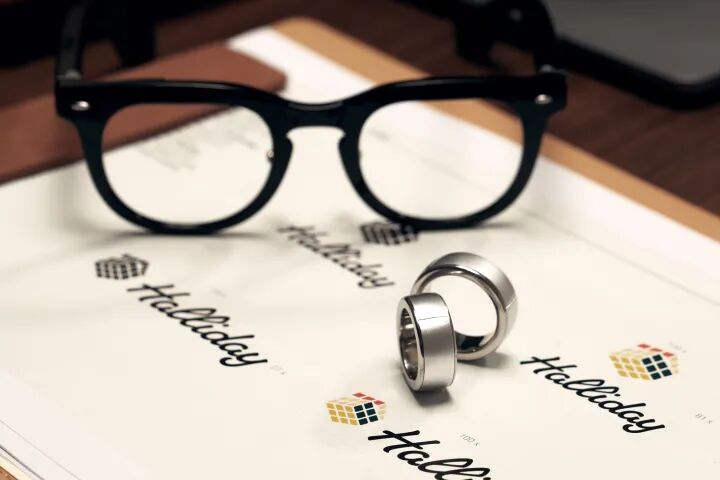
Head-to-Head: Halliday vs. Meta Ray-Ban Display
The star product of AI glasses in 2025 also includes Meta Ray-Ban Display. What are the differences between them?
Firstly, there is a fundamental difference in design philosophy. Halliday adheres to a 'less is more' minimalist approach, prioritizing lightweight and privacy, with all designs aimed at making technology 'invisible.'
In contrast, Meta follows a 'big and comprehensive' platform route, integrating higher-specification screens, cameras, and cutting-edge neural interaction technologies to create a fully functional wearable computing center.
This leads to a significant divergence in product form: Halliday resembles a focused 'AI secretary,' providing precise assistance only when needed; while Meta acts more like an all-powerful 'AI companion,' attempting to handle every aspect of your interaction with the world.
This philosophical difference is directly reflected in the core hardware.
In terms of weight, the 35-gram Halliday is nearly half that of the 89-gram Meta, making the wearing experience clearly superior.
In terms of interaction, Halliday's smart ring emphasizes elegance and intuition, while Meta's neural wristband is more futuristic and technologically ambitious.
In terms of core functions, Halliday focuses on 'viewing information,' while Meta balances 'viewing information' with 'capturing the world,' boasting powerful visual AI analysis capabilities that Halliday currently lacks.
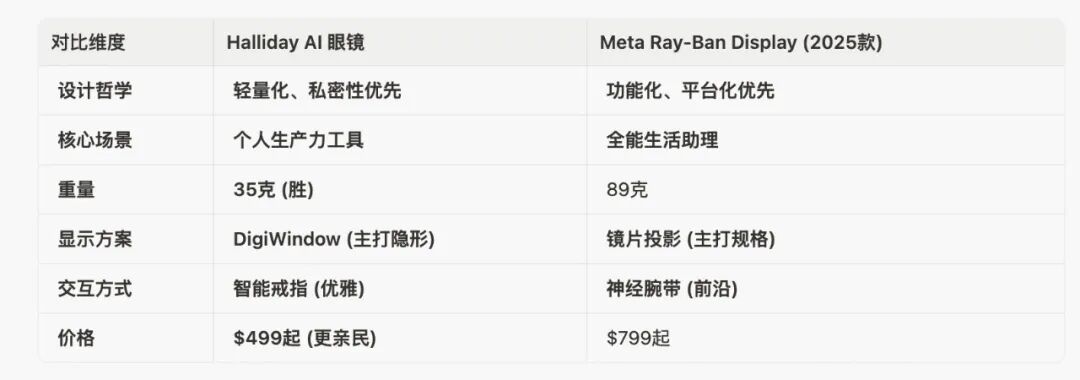
However, this is not a simple competition of who is superior. Your choice depends on your ultimate expectations for AI glasses: if you need an unobtrusive tool solely focused on enhancing efficiency, then the extremely lightweight and private Halliday is your ideal choice. If you crave the latest technology and desire an all-in-one device that helps you record, explore, and connect with the world, then the more feature-rich Meta might be more suitable for you.
Written on the Eve of the AI Glasses Boom
2025 is destined to be the breakthrough year for AI glasses. Halliday's emergence means far more than just adding another option to the market. Its success proves that in the wave of AI hardware, victory does not solely belong to resource-rich tech giants. By precisely targeting 'lightweight' and 'privacy,' two pain points long overlooked by the industry, Halliday has demonstrated a differentiated breakthrough path: the best user experience sometimes trumps the most comprehensive feature overload.
Halliday and Meta have painted two distinct futures for us. Will you choose AI as a focused and efficient 'secretary' or an all-powerful 'companion'? This question will be answered by the market and every user.
Which pair of AI glasses do you prefer?
